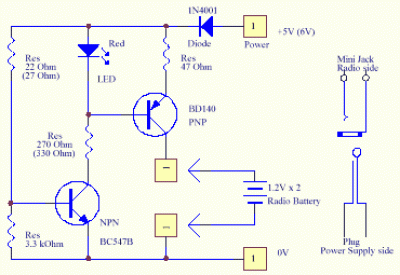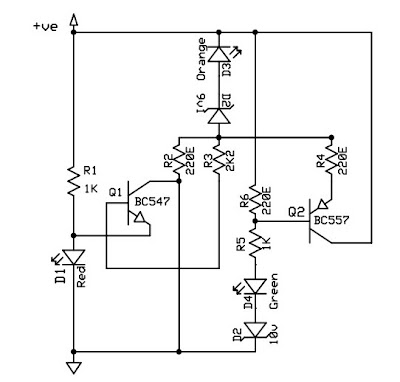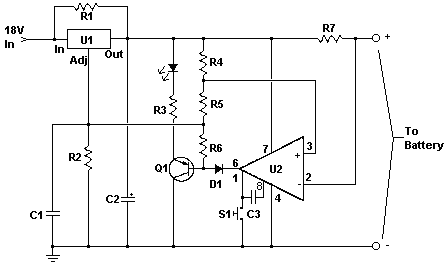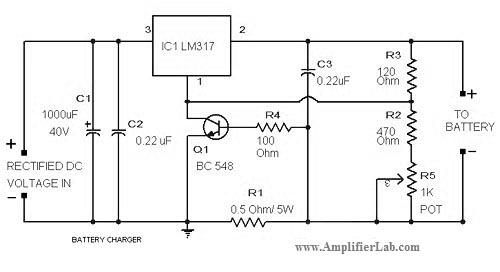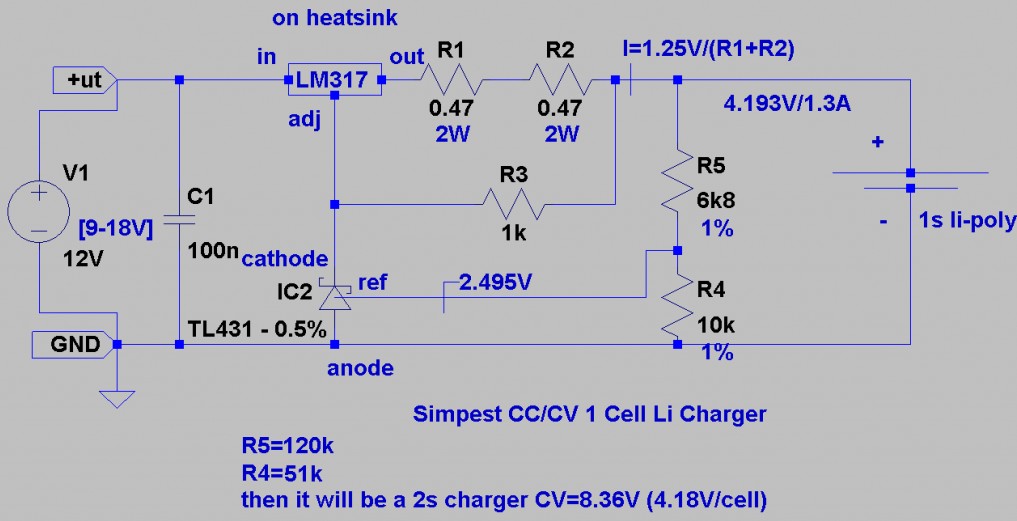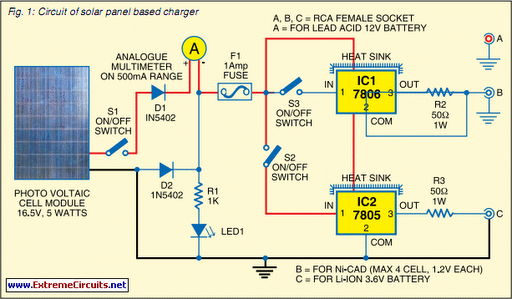
Lithium Dry Battery Charger Five

The lithium battery charger introduced in the example can charge a 6V lithium-ion battery in a constant current mode and switch to constant voltage charge mode when the battery voltage reaches 4.1V.
The lithium battery charger circuit operates on a two-stage charging process, which is essential for maintaining battery health and longevity. Initially, the charger supplies a constant current to the battery, which allows for rapid charging until the battery voltage reaches 4.1V. This constant current phase is crucial as it ensures that the battery receives a steady flow of energy without exceeding its maximum charge capacity.
Once the battery voltage reaches 4.1V, the circuit transitions to a constant voltage mode. In this phase, the output voltage is maintained at 4.1V, while the current gradually decreases as the battery approaches full charge. This transition is managed by a voltage detection control circuit that continuously monitors the battery voltage. When the voltage exceeds the predetermined threshold, the control circuit signals the oscillator to adjust the output, ensuring that the charging process is safe and efficient.
The power supply constant voltage circuit serves as the backbone of the charger, providing a stable voltage output necessary for the charging process. The oscillator is responsible for generating the appropriate switching signals that control the charging phases. Together, these components create a reliable and effective charging solution for lithium-ion batteries, ensuring optimal performance and safety during the charging cycle.
In summary, this lithium battery charger is designed to efficiently charge 6V lithium-ion batteries by utilizing a two-stage charging process that includes both constant current and constant voltage modes, controlled by a voltage detection mechanism.The lithium battery charger introuduced in the example can charge 6V-plated ion battery in constant-current way and change into constant-voltage chagre mode when the battery reaches 4·1V. Work Principle of the Circuit This lithium battery charger circuit is composed of power supply constant voltage circuit,oscillator,voltage detection control circui..
🔗 External reference
The lithium battery charger circuit operates on a two-stage charging process, which is essential for maintaining battery health and longevity. Initially, the charger supplies a constant current to the battery, which allows for rapid charging until the battery voltage reaches 4.1V. This constant current phase is crucial as it ensures that the battery receives a steady flow of energy without exceeding its maximum charge capacity.
Once the battery voltage reaches 4.1V, the circuit transitions to a constant voltage mode. In this phase, the output voltage is maintained at 4.1V, while the current gradually decreases as the battery approaches full charge. This transition is managed by a voltage detection control circuit that continuously monitors the battery voltage. When the voltage exceeds the predetermined threshold, the control circuit signals the oscillator to adjust the output, ensuring that the charging process is safe and efficient.
The power supply constant voltage circuit serves as the backbone of the charger, providing a stable voltage output necessary for the charging process. The oscillator is responsible for generating the appropriate switching signals that control the charging phases. Together, these components create a reliable and effective charging solution for lithium-ion batteries, ensuring optimal performance and safety during the charging cycle.
In summary, this lithium battery charger is designed to efficiently charge 6V lithium-ion batteries by utilizing a two-stage charging process that includes both constant current and constant voltage modes, controlled by a voltage detection mechanism.The lithium battery charger introuduced in the example can charge 6V-plated ion battery in constant-current way and change into constant-voltage chagre mode when the battery reaches 4·1V. Work Principle of the Circuit This lithium battery charger circuit is composed of power supply constant voltage circuit,oscillator,voltage detection control circui..
🔗 External reference
